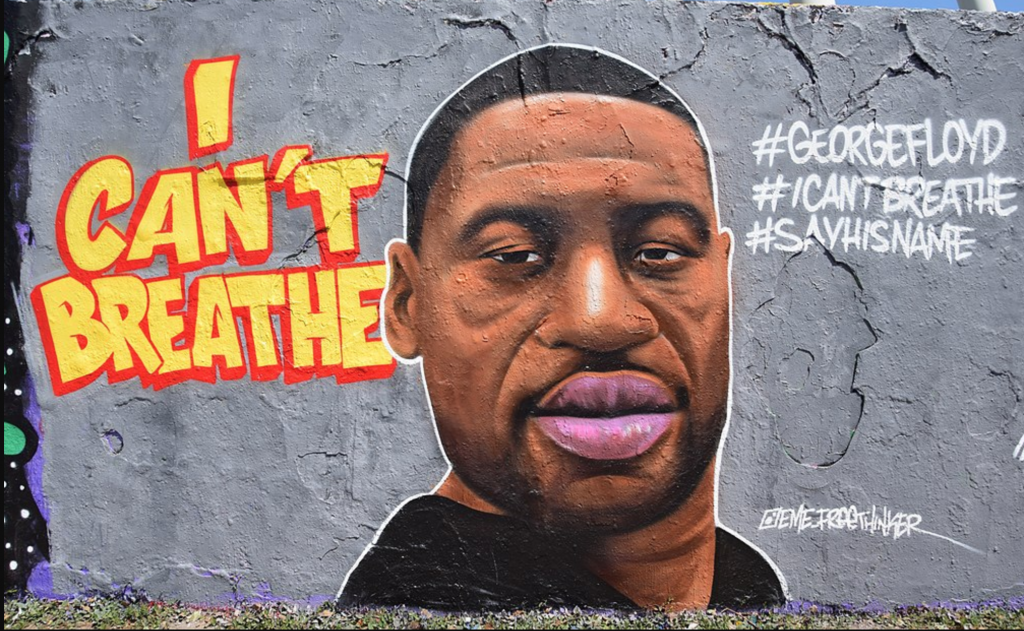
George Floyd, the victim of police brutality whose death sparked a wave of Black Lives Matter protests. The mural portrait of George Floyd is by Eme Street Art, located at Mauerpark in Berlin. (Source: Wikimedia)
Operation Safety Net Collects Protester Information Unrelated to Floyd Protests
A Minnesota task force set up to monitor protests in the wake of the murder of George Floyd under the knee of a police officer continued to collect images and data on people protesting long after they claimed to have stopped, according to an investigation done by Technologyreview.com, based at the Massachusetts Institute of Technology.
Even worse, the protests were completely unrelated to the Floyd case, and involved a coordinated effort to arrest people without telling them why or charging them so that they could intimidate them and discourage protests. Their anonymity was taken away and they were tracked via facial recognition, videos and social media, along with journalists covering events.
“Documents obtained through public records requests show that the program, known as Operation Safety Net (OSN), held regular meetings, conducted policing operations, continued close coordination, and updated intelligence documents until at least October 2021, far past its publicly announced “demobilization” in April 2021.”
Eleven state, local and federal agencies were involved in the illegal law enforcement harassment program, which goes against a Supreme Court ruling that public protesters have the right to remain anonymous. Instead, their names and data were collected as part of an effort to track and potentially harass them in future protests.
“In October 2021, the Minneapolis Police Department responded to protests in the city’s Uptown neighborhood following the killing of Winston Smith by law enforcement officers. Internal planning documents titled “Operations Plan/Operation Safety Net” explained how officers should go about making arrests, how to book protesters, assigned roles, and laid out other procedures.
“Among those procedures, the documents confirmed what protesters had alleged was a new tactic—arresting demonstrators, refusing to say under what charges, and either dropping them off blocks away or booking them in jail.”
The shadow program shows how easily law enforcement agencies can slip into activities that deny protesters their First Amendment rights because of fears of potential violence. The Minneapolis Police Department claimed that it was acting to “ensure public safety” and denied that the OSN was still operational—a claim that the documents disproved. They continued to monitor protesters who demonstrated over two other killings of black Minnesotans by police.
“Munira Mohamed, a policy associate at the ACLU of Minnesota, said that the ‘porous nature’ of collaborative law enforcement practices creates ‘all these opportunities for loopholes and to evade public scrutiny and public oversight.’ “
read more at technologyreview.com







Leave A Comment